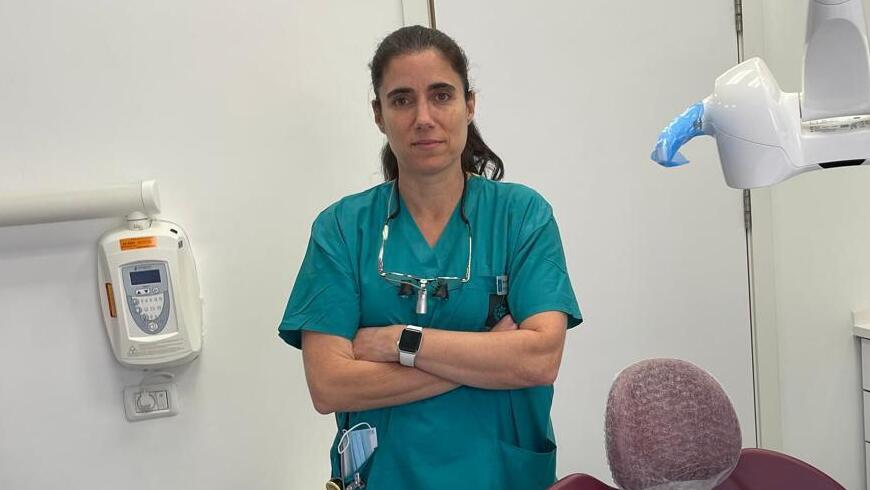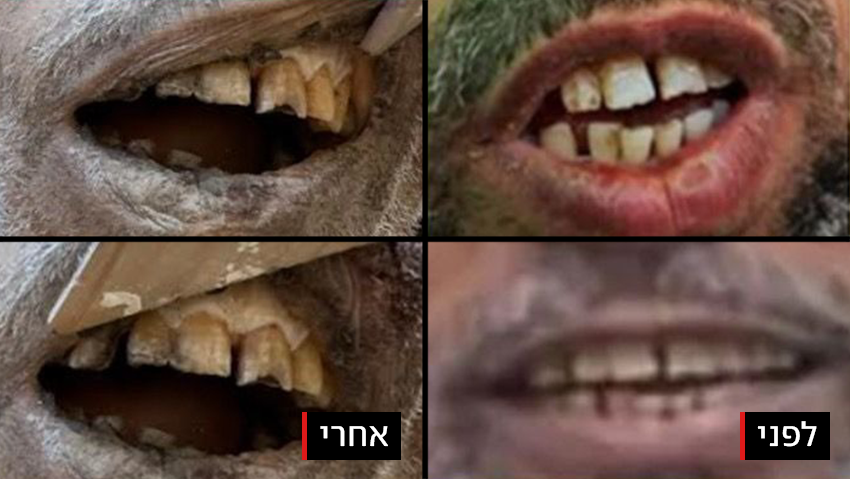Dr. Assi Sharon-Sagi’s phone rang while she was at home. In addition to her regular role as an oral and facial reconstruction specialist at Hadassah Medical Center in Jerusalem, she has volunteered for years with the dental forensic identification unit. Since the start of the war, Dr. Sharon has been tasked with identifying victims of the Hamas atrocities and fallen soldiers.
That urgent call brought monumental news—Dr. Sharon was the first to confirm with a high degree of certainty that the terrorist who was killed by IDF forces in Gaza last week, was the notorious Hamas leader Yahya Sinwar. His body was examined and identified at the Institute of Forensic Medicine in Abu Kabir before being stored at a secret location.
"Every so often, they send me a photo and ask if I have anything to say about it or if there’s something important to note. It happens quite often," Dr. Sharon says. "That’s exactly what happened on Thursday last week. I was at home, received a call and some pictures, and the second I saw them, I knew who I was looking at."
Did you recognize him right away?
"Yes. While it does require sitting down, checking, and going over every detail to write an official report, I knew immediately from the first glance. I was thrilled. I hopped up and shouted, 'I know who this is!'"
Dr. Sharon had been preparing for this moment for months. "In recent months, I decided I wanted to gather information in case we received Sinwar for identification," she shared. "With the help of the police forensic unit and the Israel Prison Service (from Sinwar’s time as a prisoner), we collected data. At first, it was general information, numbers, and so on, but then we moved on to building a detailed file by gathering images from social media."
"We call this an 'anti-mortem' file—a file built before death, containing all relevant information, whether it’s photos, CT scans, or other features not directly related to teeth but visible in the face and ears. Dr. Ayala Groswald-Meiri put it all together."
"Fortunately, in Sinwar’s case, his teeth are extremely distinctive, and they appear in all the pictures. Later, we obtained information from Soroka Medical Center, where Sinwar underwent brain surgery in 2005. We retrieved three of his CT scans from the hospital. We kept this file, and every expert in the unit was familiar with its details and images. So, when I first saw the picture, I knew immediately what I was looking at."
According to Dr. Sharon, dental identification is one of three scientific methods used by the forensic unit to identify bodies. "We rely on one of three things—or a combination of them: dental X-rays, dental treatments, or morphology—the shape of the teeth, jaw structure, and sinuses," she explained. "In Sinwar’s case, his front and side morphology are very distinctive—he has missing teeth and gaps between them. The moment I saw the picture, I could make the comparison. After that, we sat down and wrote up all the details to complete the identification report."
Dr. Sharon has been volunteering with the unit since 2010 and has been involved in many tragic events that claimed the lives of Israelis. "The first one I worked on was the Carmel fire disaster. Another was the Nahal Tzafit flood disaster, which was the first time I had to identify such young and beautiful people," she recalled. "Over the years, there have been major car accidents and other events, but the biggest tragedy came on October 7, with the massacre of the young people at the Nova music festival."
"We arrived on the night of October 7, and we started identification on October 8, working around the clock—24 hours a day, seven days a week. It went on like that for a long time, and later it became more focused operations. Throughout all these months, we’ve been receiving either information or bodies, conducting examinations, and working to identify or rule out victims, all in the effort to locate the hostages."
Does identifying Sinwar bring any sense of closure?
"I’m not sure yet if I feel a sense of closure because I’m waiting for something else—something happy. I’m waiting for the hostages. But I can say that it’s satisfying to have identified the man who murdered so many of the people I’ve identified during this time. It’s important for me to say that identification work is a team effort. Everyone contributes, building one layer on top of another, so we can create organized files and complete the identification process. That’s what allowed us to make this quick identification."
"I wasn’t alone in this identification," she added. "Two other specialists were with me: Dr. Revital Hebert, who led the unit for ten years, and Dr. Tzipi Kahana, a forensic anthropologist. She also contributed additional details that weren’t included in the official report, which is based on dental identification, but they added to the certainty of our forensic findings."
This kind of work over such a long period must take a mental toll.
"I can’t fully describe the psychological difficulties that this role demands of us. But I can say that the best places for me to be, and the people who are easiest for me to talk to, are those who work alongside me in the unit. When I’m with them, I feel calm, and everything is fine. But when I’m in my regular job at hospitals and clinics, it’s much harder for me. It feels like such a stark contrast to the identification work. I always feel like I’m in the wrong place, like I should be helping with the identification work. But my real life is my job as a dentist and a mentor to residents."
Meanwhile, as the war in Gaza and the north continues, there’s only one thing she’s hoping for. "I just hope as many hostages as possible return alive, so I can take them off my lists because they’ll come back on their own two feet. I’ll stay in this role and do this work as long as it’s needed from me and the unit. We’ll do everything we can to bring the murdered hostages back to their families."
Get the Ynetnews app on your smartphone:




